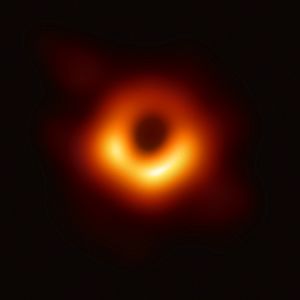Smithsonian Astrophysical Observatory facts for kids

The Center for Astrophysics | Harvard & Smithsonian (CfA) Headquarters in Cambridge, Massachusetts. The Smithsonian Astrophysical Observatory (SAO) has been joined with the CfA since 1973.
|
|
| Abbreviation | SAO |
|---|---|
| Established | 1890 |
| Purpose | Research in astronomy, astrophysics, Earth, and space sciences |
| Headquarters | 60 Garden Street, Cambridge, Massachusetts, United States |
|
Director
|
Charles R. Alcock |
|
Staff
|
850+ |
The Smithsonian Astrophysical Observatory (SAO) is a special research center. It is part of the Smithsonian Institution. SAO scientists study many things about space. They look at astronomy and astrophysics. This includes studying galaxies far away and our own Milky Way galaxy. They also study the universe as a whole.
SAO researchers also learn about our Sun and other planets. They use different kinds of light to study space. This includes very strong gamma rays and radio waves. They even study gravitational waves.
SAO started in Washington, D.C. in 1890. In 1955, its main office moved to Cambridge, Massachusetts. There, it joined with the Harvard College Observatory (HCO). In 1973, these two groups officially became the Center for Astrophysics | Harvard & Smithsonian (CfA). They work together under one leader.
History of SAO
The Smithsonian Astrophysical Observatory was started by Samuel Langley. He was the third leader of the Smithsonian Institution. SAO opened on March 1, 1890, in Washington, D.C. It was located near the Smithsonian Castle.
At first, SAO's main goal was to study the Sun. They wanted to "record the amount and character of the Sun's heat." This means they measured how much heat the Sun gives off. They also looked at different types of light from the Sun.
Charles Greeley Abbot became SAO's first director. He used solar telescopes to measure the Sun every day. His work helped scientists better understand the Solar constant. This is the amount of energy the Sun sends to Earth. He also found out that the Sun's activity changes over time. This is called Solar variability.
In 1955, SAO's main science office moved. It went from Washington, D.C., to Cambridge, Massachusetts. This move allowed SAO to work closely with the Harvard College Observatory (HCO). Fred Lawrence Whipple became the new director of SAO. He was also the head of Harvard's Astronomy Department.
After Sputnik launched in 1957, SAO took on a big job. Sputnik was the first human-made satellite in space. SAO helped create a network around the world to track satellites. They worked with the United States Air Force on Project Space Track.
Later, NASA was created. During the Space Race, SAO helped a lot. They worked on building telescopes in space. They also helped build large telescopes on the ground. SAO also used computers to solve problems in space science.
| SAO Director | Years as Director |
|---|---|
| Samuel Pierpont Langley | 1890–1906 |
| Charles Greeley Abbot | 1906-1942 |
| Loyal Blaine Aldrich | 1942-1955 |
| Fred Lawrence Whipple | 1955-1973 |
| George B. Field | 1973-1982 |
| Irwin I. Shapiro | 1982-2004 |
| Charles R. Alcock | 2004-present |
SAO's Observation Sites
Over the years, SAO has had many places around the world where they observed space. These "remote stations" helped them gather data. They had sites in places like California, Chile, Arizona, and even Namibia. These stations were important for studying the Sun and tracking satellites.
SAO Today
The current director of SAO is Charles R. Alcock. He has been the director since 2004. Today, about 170 scientists work at SAO. Many other researchers also work there.
SAO also has about 120 postdoctoral researchers. These are scientists who have finished their Ph.D. and are doing more research. Many of them are women. SAO scientists also teach Harvard students. They help about 30 other graduate students with their Ph.D. projects. About 30 college students also intern at SAO each year. In total, about 950 people work at the Center.
Images for kids
See also
 In Spanish: Observatorio Astrofísico Smithsoniano para niños
In Spanish: Observatorio Astrofísico Smithsoniano para niños




